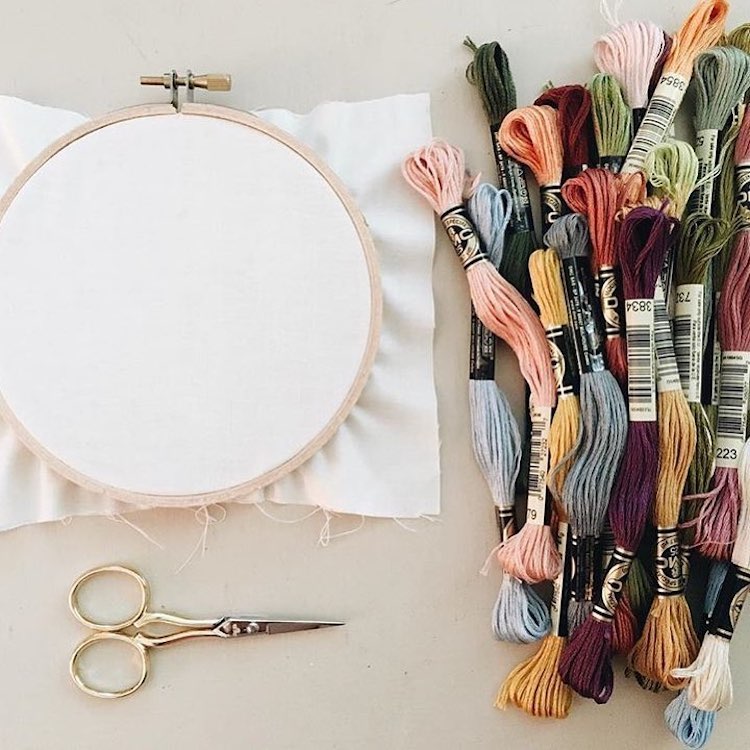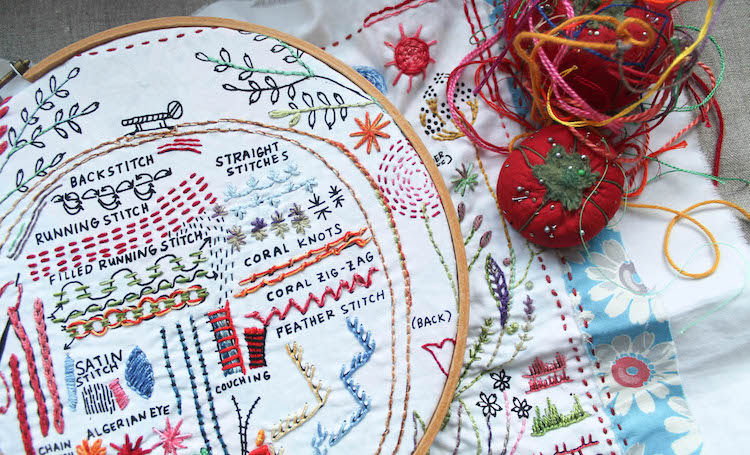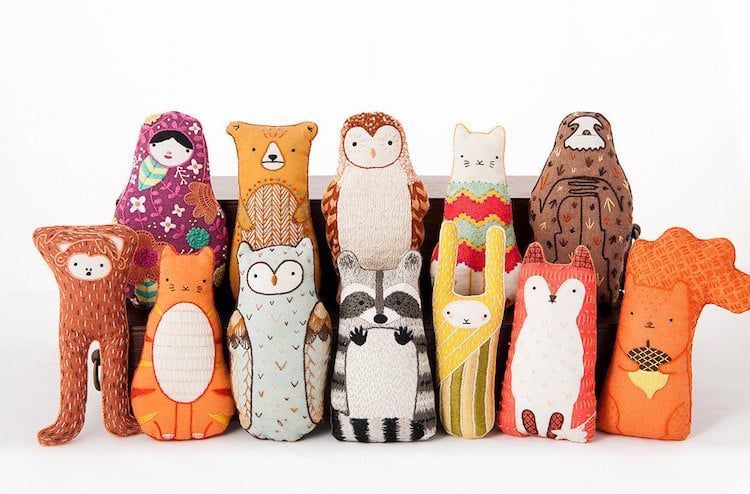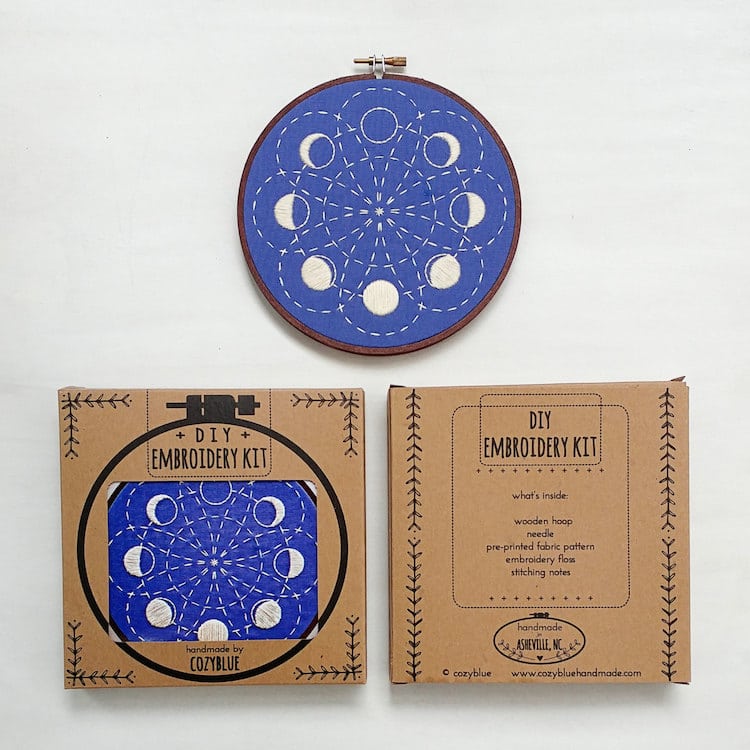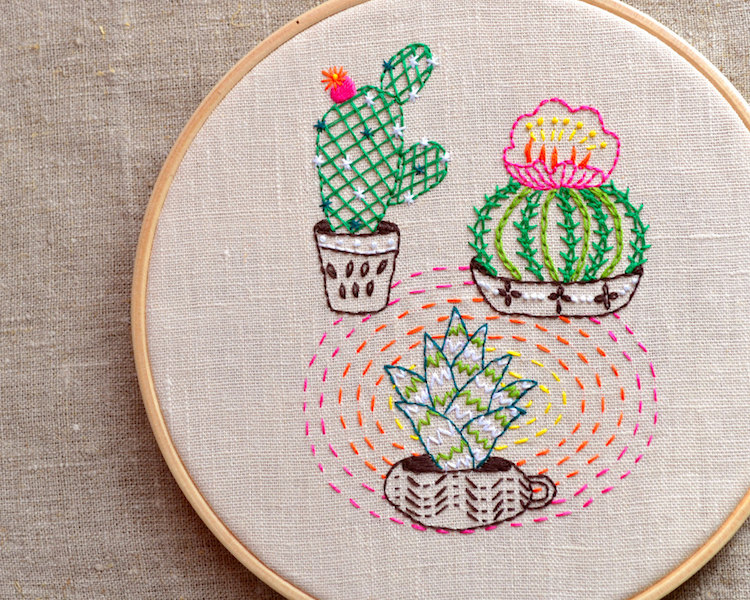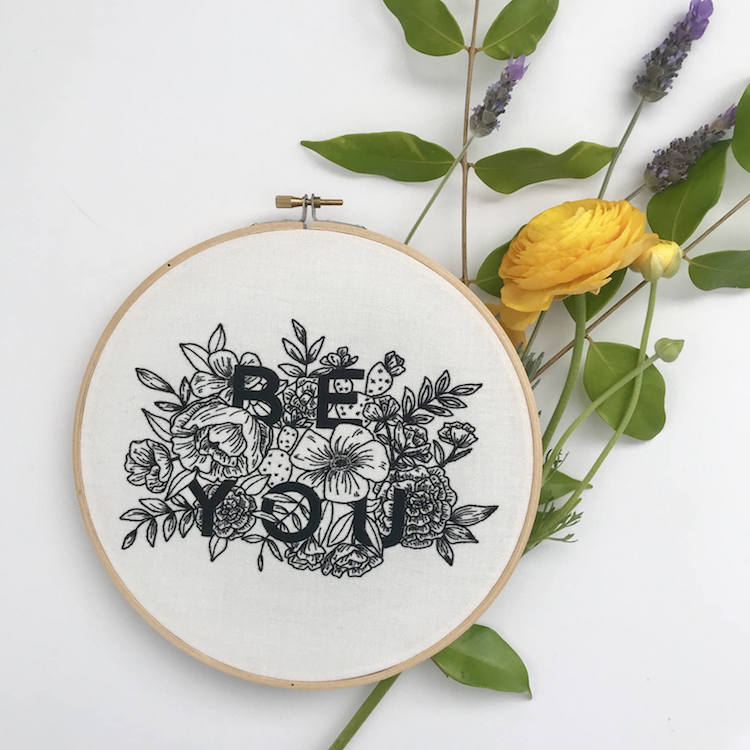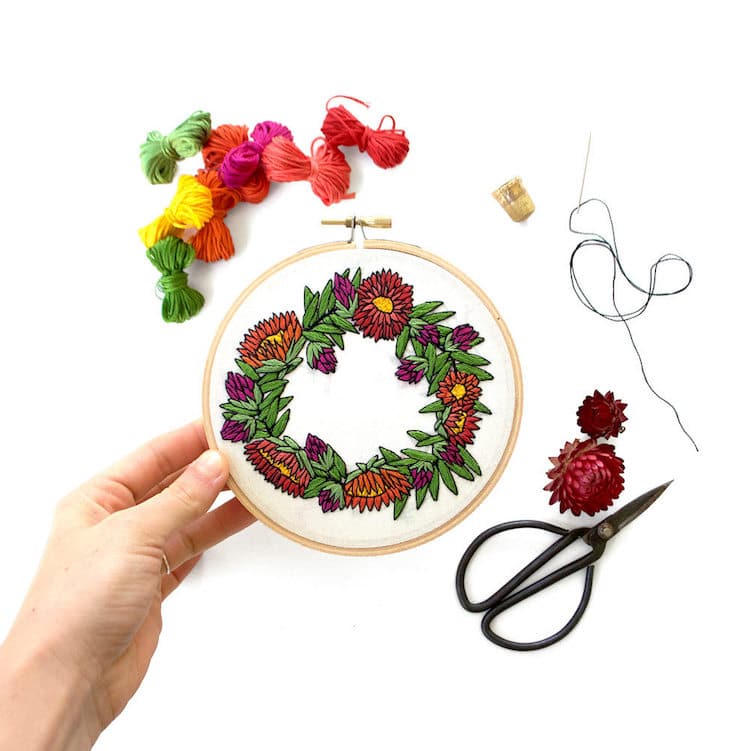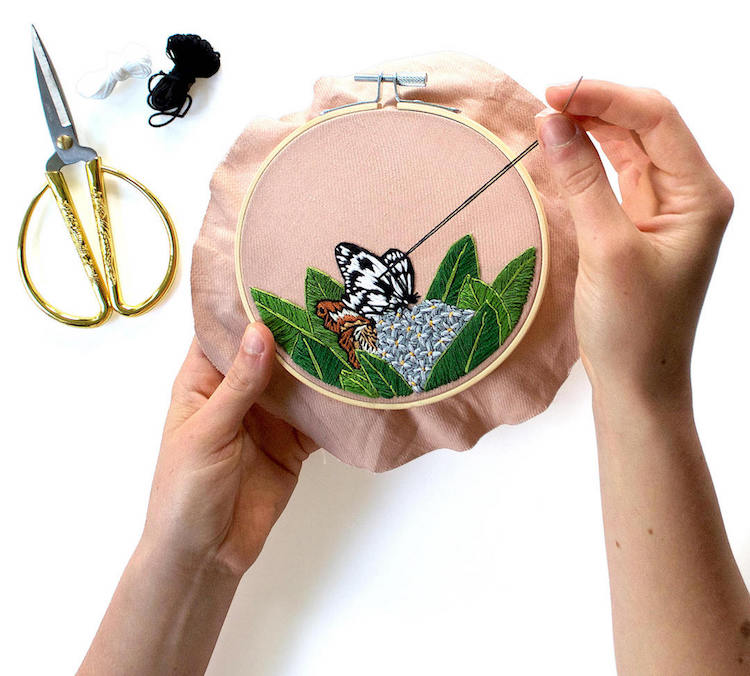
Sarah K. Benning
This post may contain affiliate links. If you make a purchase, My Modern Met may earn an affiliate commission. Please read our disclosure for more info.
Embroidery has been around forever—and that’s hardly an exaggeration. Its roots are ancient, with every culture having some form it in their textile art history. Although the activity started with practical beginnings to mend clothing, it has grown into a creative endeavor that remains popular today. Hand embroidery has seen a major resurgence over the past several years—particularly among contemporary artists who incorporate thread into their work, or use the embroidery hoop as a frame for fabric art.
Beginning Hand Embroidery
Embroidery has humble roots, which is great news for beginners; it’s an easily accessible craft to start. Supplies are inexpensive and the techniques range from basic to advanced. You might even know some of the embroidery stitches—many of us learn to sew from a parent or grandparent, as the skills of embroidery are traditionally passed on from generation to generation.
Supplies
Here’s a supplies list to get you started:
- Embroidery hoops. Hoops come in all sizes, from just a few inches in diameter to over a foot.
- Thread (aka floss). The DMC brand is industry standard (it’s been around since 1746), and they have a very loyal following. It’s easy to see why—a skein is less than a dollar and they have a ton of colors available.
- Scissors. Embroidery scissors are small (palm-sized) and just sharp enough to trim thread.
- Needles. Needles often come in packs with a range of sizes. Depending on the type of fabric you’re sewing on, some needles will work better than others.
- Fabric. The possibilities are seemingly endless when it comes to sewing. If you’re looking for a place to start, try a fabric that’s pure cotton. Make sure that it doesn’t have stretch (like you might find in cotton blends) and that its weave isn’t too loose.
These supplies aren’t necessary to begin embroidery, but will help you stay organized.
- Plastic bobbins. These are a lifesaver, especially if you have a lot of thread. Before you begin stitching with a thread, write the color on one of these bobbins and then wind it around the plastic piece. That way, when you run out of thread, you’ll know what type of skein to buy!
- Thread organizer. Store your thread, embellishments, and other supplies in one of these handy bins.
Learning Embroidery Stitches
Embroidery stitches have an incredible range of skills. Some are so basic that you probably know them, even if you haven’t sewn before. Others are more advanced and require instruction and a lot of practice. Luckily, with embroidery resurgence, there is no shortage of places to learn embroidery stitches.
Embroidery Books to Read
While there are many books dedicated to learning embroidery stitches, here are a few best sellers.
- Embroidery by DK: This “stitch dictionary” shows you how to create 200 stitches step by step. They range from easy to advanced and decorative to practical.
- Needle Painting Embroidery: Fresh Ideas for Beginners by Trish Burr: Comprising 15 projects, each shows you how to craft your stitches so that they have the feeling of a painting.
- Free-Form Embroidery with Judith Baker Montano: Transforming Traditional Stitches into Fiber Art by Judith Baker Montano: When you’re ready to go beyond traditional embroidery, this book will inspire you to build layers, blend shapes, and create dimension in your work.
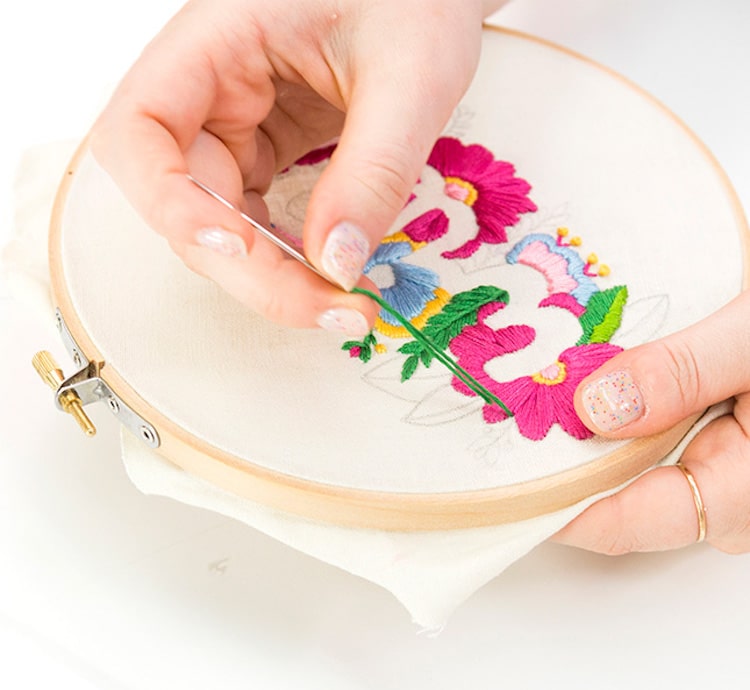
Embroidered Typography
Instructional Videos & Online Classes
If you’re looking for video instructions that explain the basics of embroidery, online classes are a great place to start. Here are a few you can try today!
- Hand Embroidery Fundamentals: Stitch Your Own Floral Monogram, Skillshare: Designer Dana Batho introduces you to the fundamentals of hand embroidery with cross-stitch.
- Customize Your Embroidery, CreativeLive: Instructor Lisa Shafer has been creating needlework for the past 15 years and shows you how to create your own, including apps that’ll help you pick the right stitches.
- Embroidering Your Letters: Introduction to Monogramming, Skillshare: For fans of embroidery, you will apply all of the hand embroidery techniques you learn in the class to make your own monogrammed hoop art, perfect for wall decor or a personalized gift.
Get started stitching with embroidery kits and embroidery patterns
In addition to buying your own supplies and starting embroidery on your own, there are also embroidery kits and embroidery patterns that make it simple to get started. Embroidery kits are the easiest—they often include everything you will need, from the pattern to the thread. Embroidery patterns offer more freedom, but are still a good base from which to start. While you’re stitching, you can change colors to customize the image as truly your own.
Embroidery Kits for Sale
Modern embroidery patterns

